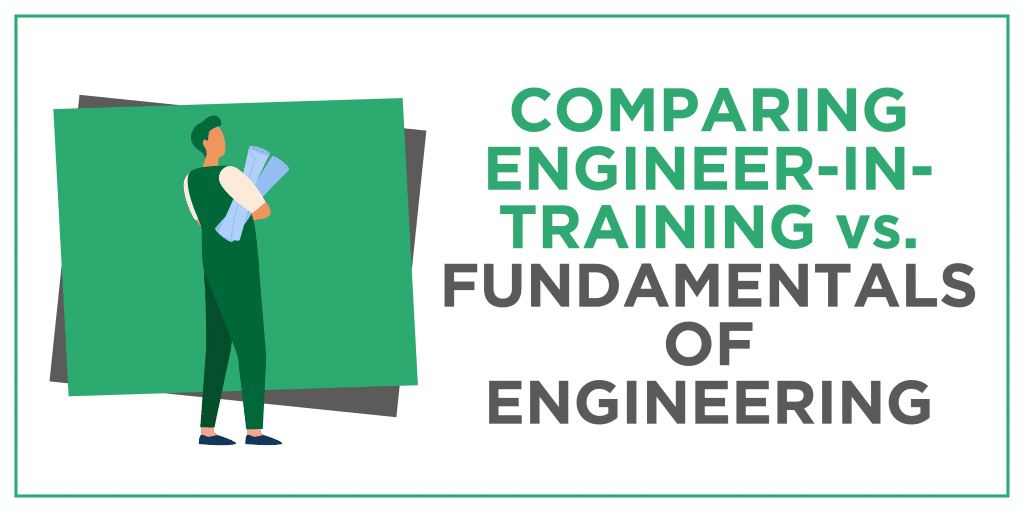From the longest bridges in the world to the Great Pyramids and through the longest canals on the planet, it’s engineers that make the world go round. Or at least, they help us get around in it.
If you’re on this career path for professional engineers, one of the toughest parts is deciding which engineering discipline to study.
After all, it’s a wide field of industries and disciplines. Will you become a structural engineer? A civil engineer? Or maybe you’re more into electrical or mechanical. From environmental engineers to structural and civil engineers, there are so many options.
It’s these last two that are the focus of this article.
Both civil engineering and structural engineering have many similarities, but their salaries, job prospects, and educational content differ.
Let’s look at both civil and structural engineers, compare these two careers, and hopefully, make your choice a lot easier.
Civil Engineer vs. Structural Engineer: Key Differences
To put it simply, civil engineering includes both the planning and design of public and private buildings as well as other structures. They are the project managers of the engineering field, and they often focus on design elements as well as the materials that the site design requires. Civil engineers create the plan based on their knowledge.
Structural engineers also work with materials, but their jobs are more laser focused. They ensure structural elements are sound and that the design can safely bear any stressors or forces applied by a load.
All structural engineers are civil engineers, but the reverse isn’t true.
Civil Engineers vs. Structural Engineers: Educational Requirements
Essentially all engineering disciplines have the same basic educational background. First, you must complete a 4-year degree in engineering. There is a slight difference at this stage since a civil engineer needs a degree in civil engineering, and a structural engineer need a structural engineering degree.
But college is just the beginning of your engineering education— certification is the next step. After you receive your civil engineering degree (or structural degree) you’ll be ready to take this journey.
There are 3 major certifications based on engineering: Engineer in Training (EIT), Fundamentals of Engineering (FE), and Professional Engineer (PE). Requirements for these are state-specific, but there are some similarities across the country. Earning an EIT typically requires you to finish your education or have several years of work experience. The FE has similar education and work requirements. Lastly, the PE requires you to have an FE license and 5-6 years of work experience.
Civil Engineering vs. Structural Engineering: Test Content
According to the NCEES, the FE and EIT share an exam for their certification. Earning an FE is actually a requirement for the EIT certification in certain states. This test consists of 110 questions focusing on specific engineering disciplines. And no matter which discipline you choose, you’ll have six hours to complete it.
FE Exam
Speaking of disciplines, the FE exam comes in seven different types. But for our discussion, only two of these are relevant.
Naturally, civil engineers should take the Civil FE exam. However, there’s no specific exam for structural engineers, so they may want to choose FE Other Disciplines. Pass rates for the two exams are 69% and 68% respectively, so they’re more or less equally difficult to pass. They also have the same $175 enrollment fee, so you won’t save money by choosing one or the other.
Here’s a quick side-by-side comparison of their exam content:
| Civil PE Exam | Other Disciplines PE Exam |
| Math & Statistics (8-12 questions) | Mathematics (8-12 questions) |
| Structural Engineering (10-15 questions) | Statistics & Probability (6-9 questions) |
| Construction Engineering (8-12 questions) | Chemistry (5-8 questions) |
| Transportation Engineering (9-14 questions) | Controls & Instrumentation (4-6 questions) |
| Ethics & Professional Practice (4-6 questions) | Ethics & Societal Impact (5-8 questions) |
| Surveying (6-9 Questions) | Environment, Health & Safety (6-9 questions) |
| Economics (5-8 questions) | Economics (6-9 questions) |
| Statics (8-12 questions) | Statics (9-14 questions) |
| Dynamics (4-6 questions) | Dynamics (9-14 questions) |
| Material Mechanics (7-11 questions) | Material Strengths (9-14 questions) |
| Materials (5-8 questions) | Materials (6-9 questions) |
| Fluid Mechanics (6-9 questions) | Fluid Mechanics (12-18 questions) |
| Geotechnical Engineering (10-15 questions) | Electrical Engineering (6-9 questions) |
| Environmental Engineering & Water Resources (10-15 questions) | Heat Transfer & Thermodynamics (9-14 questions) |
Italicized subjects are covered on both exams.
As you can see, several subjects are covered on both exams: math and statistics, statics and dynamics, materials and fluid materials, ethics, and economics. However, the Other Disciplines PE exam places greater focus on math and statistics, as well as statics and dynamics.
On the other hand, the Civil PE exam focuses on several similar engineering disciplines, with structural engineering among them. So if you’re interested in being a structural engineer, you may want to take the Civil PE exam instead of Other Disciplines— especially if math isn’t your best subject.
If you’re interested in being a structural engineer, you may want to take the Civil PE exam instead of Other Disciplines— especially if math isn’t your best subject.
PE Exam and SE Exam
If you want to enroll in the PE exam, you need to have FE certification and 4 years of work experience in your chosen engineering discipline. Unlike the FE exam, the PE exam cost is dependent on the state in which you live and practice. Make sure to check with your state engineering board to see what the fees are.
The PE exam is where structural engineers’ education starts to diverge from civil engineers. It can be confusing if you’re interested in structural engineering— so if that’s what you want, it’s important to understand this next step.
For civil engineers, there are five different PE exams covering the disciplines (aka depth) tested on the Civil PE exam: Construction, Geotechnical, Transportation, Environmental, and Structural. This means that you can take the structural depth alongside the civil engineering breadth if you want to work in that field.
However, there’s another option for you as an aspiring structural engineer, although it’s considerably more difficult. There’s a separate professional engineering exam that’s referred to as the Structural PE Exam (aka the SE Exam). It’s twice the length of the Civil PE exam and takes two full days to complete.
Preparing for the SE exam comes with its own set of challenges, but it also comes with its own share of benefits once you establish your career. More on that below:
The PE exam is where structural engineers’ education starts to diverge from civil engineers. It can be confusing if you’re interested in structural engineering— so if that’s what you want, it’s important to understand this next step.
Civil Engineers or Structural Engineers: Job Prospects
Once you’ve completed the long list of educational requirements outlined above, you’ll be ready to start work as a civil or structural engineer. In terms of workload, the two are fairly similar. However, the rate of job growth and available careers can be quite different between the two.
Civil engineers will be asked to construct and maintain infrastructure projects in both the private and public sectors. You’ll most likely find work as a city engineer, city manager, or public works director, but you may also find work in construction. According to the U.S. Bureau of Labor Statistics, employment for civil engineers is expected to increase by 2% in the next decade. This is slightly lower than the average for all occupations, so you can expect some competition for these positions.
Structural engineers have a much more specific area of work. They work on buildings and other major construction projects. Thanks to that, most of their work happens onsite as they supervise the construction of the projects they’ve designed. Their expected employment rate is 4%, which is the average among other occupations.
Salaries
As you’re probably aware, engineering is a very lucrative career. Civil engineering and structural engineering salaries are no exception to this rule.
According to Payscale, the average salary for a civil engineer is around $67,000 a year. That may not sound like much when you consider the amount of education required, but that salary can increase as high as $100,000 after some work experience. Currently, some common employers for civil engineers are Aecom Corporation and Jacobs Engineering Group.
By contrast, the average salary for structural engineers is slightly higher at $70,000 a year with a high end of $105,000. Once again, making that much requires you to have all your certifications and years of experience— not to mention continuing education to maintain your professional status. The most popular employers for structural engineering include The Boeing Company and Northrop Grumman Corporation.
Bottom Line
As you can see, civil and structural engineering have a lot of overlap in education, but can differ in terms of job opportunities and projected career outlook. At the moment, structural engineers make slightly more money and have more projected career opportunities in the near future.
Based on the research, it seems like the best post-college career path would involve taking the Civil FE Exam, then the PE Exam with a depth focus on either Civil or Structural based on your eventual career goal. If you opt for structural engineering, passing the SE exam is a good idea and may even be mandatory depending on your location.
At the end of the day, what’s important is that you pick a career that lets you do something you enjoy. So whether you’re interested in construction, structural maintenance, or something entirely different, I wish you luck passing all your exams!
Based on the research, it seems like the best post-college career path would involve taking the Civil FE Exam, then the PE Exam with a depth focus on either Civil or Structural based on your eventual career goal.
FAQs
A: There will always be some level of stress involved when working as a civil engineer. You’ll need to meet regular deadlines and ensure that your work doesn’t endanger human lives. That will inevitably lead to long hours and a push for perfectionism in your work— but the reward is an impressive salary and a legacy of helping create functional structures that benefit lots of people in their daily lives.
A: There are always salary differences between engineering firms. But between civil and structural, structural engineers tend to make more money. But out of all engineering disciplines, petroleum engineers easily make the most at an average of $111,000 a year.
A: Structural engineering is the design and construction of structures. It’s extremely important because an improperly designed building can endanger human lives. That’s why structural engineers are needed to ensure every building is safe, and it’s why they have more certification requirements than civil engineers.
A: Yes, but it’s not much more difficult to be a structural engineer than a civil engineer. The most difficult part of the process is completing your education requirement and earning your certifications. Once you’ve done that, your work simply requires you to apply what you’ve learned!














